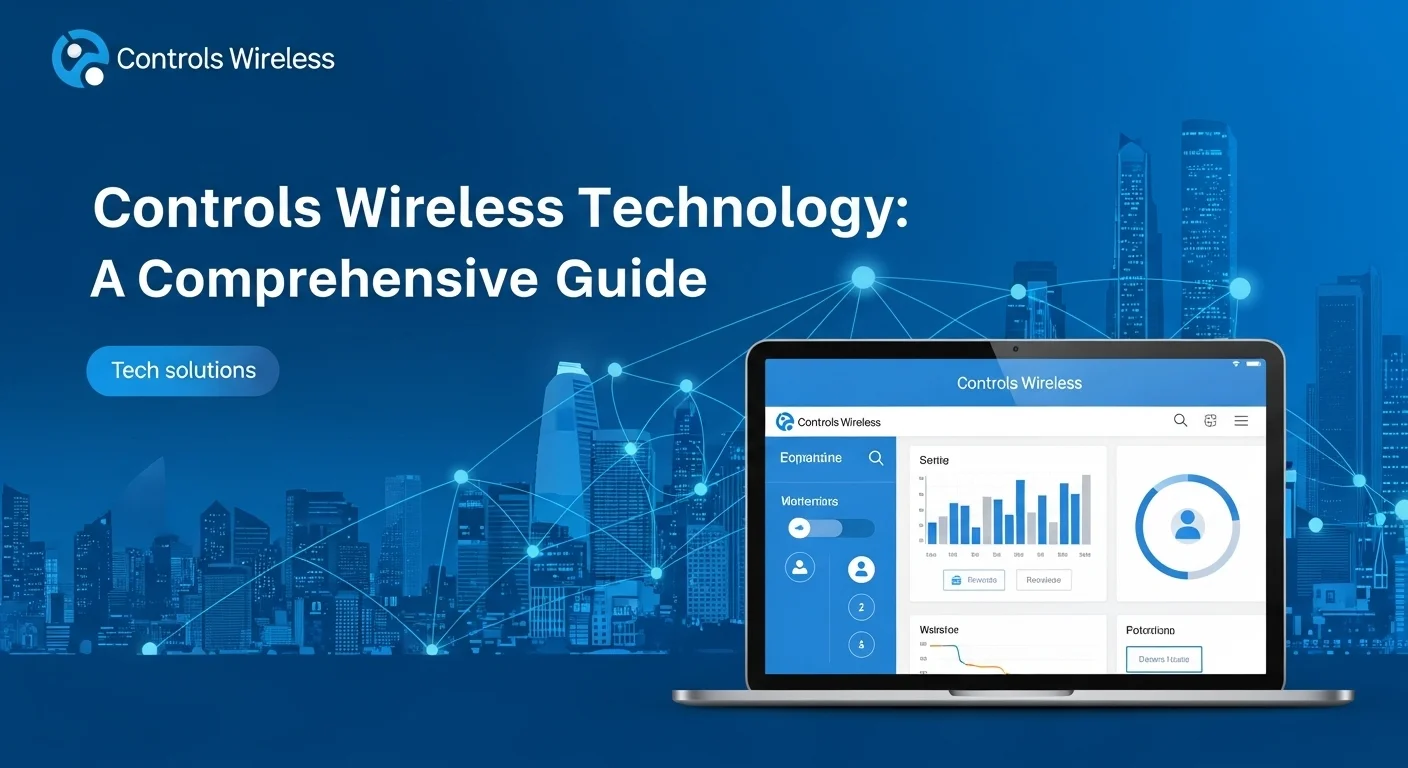My Expert Guide to Domotics: Making Your Home and Business Truly Smart

Executive Summary
The term 'domotics' might sound a bit technical, but it’s really just about making our spaces smarter. I’ve been working with this technology for over a decade, back when home automation was a clunky, expensive hobby for tech fanatics. Today, it’s a game-changer for everyone. Domotics is the magic that connects your lights, thermostat, security, and more into one seamless system you can control from your phone or with your voice. But it’s not just for homes anymore; businesses are using these same ideas to become more efficient and secure. At its heart, this is where the Internet of Things (IoT) and artificial intelligence (AI) come to life, helping us live and work in smarter, more sustainable ways. For businesses, this means lower energy bills and smoother operations. For you at home, it means a new level of convenience that can genuinely make your day-to-day life easier. Understanding domotics is the first step to unlocking this amazing potential.
Table of Contents
- What is Domotics and Why Does It Matter?
- The Core Components of a Smart System
- How Businesses Benefit from Automation
What is Domotics and Why Does It Matter?
When I first got into this field, 'domotics'—a blend of 'domus' (Latin for home) and 'robotics'—was a niche term. It’s the science behind home automation was a clunky, the tech that turns a regular house into a 'smart home.' Think of it as giving your home a brain. It integrates everything from your lights and thermostat to your security cameras and speakers, letting you manage them all from one place. We've come a long way from simple outlet timers. Now, we have intelligent, AI-powered ecosystems that actually learn your habits and adapt to your lifestyle. A good automation setup is more than just connected; it's a responsive environment built on a network of hardware and software working in harmony to make your life easier.
The reason domotics is such a big deal in technology today is that it’s where several massive trends collide, especially the Internet of Things (IoT) is simply the network of everyday objects—thermostats, lightbulbs, cars—that are connected to the internet to send and receive data. Domotics is the most personal and tangible application of IoT. Every smart device you add to your home is another point in this network. This synergy pushes innovation in everything from Wi-Fi and cloud computing to cybersecurity. All the data from your smart home provides the perfect fuel for Artificial Intelligence (AI) and Machine Learning (ML). For example, I've seen AI systems that learn a family's schedule to optimize the thermostat, saving them serious money on energy bills, or systems that can tell the difference between a pet and an intruder, making security smarter. This cycle of data, learning, and action is what makes home automation a key driver of tech's future.
The Core Components of a Smart System
To really get it, let's break down a smart home system into its parts. I always explain it like the human body. Every setup, no matter how simple or complex, has four key components. First, you have Sensors—these are the eyes and ears. They collect information, like motion, temperature, light, or whether a door is open. Next are the Actuators, which are the muscles. They perform an action when told, like a switch flipping a light, a motor closing the blinds, or a valve shutting off water. The third part is the Controller or Hub, which is the brain of the whole operation. This is where all the information from the sensors is processed and where commands are sent to the actuators. It's the central command, and choosing a great hub is crucial for a smooth experience. Finally, you have the User Interface—how you talk to the system. This could be a slick app on your phone, a wall panel, or just your voice, thanks to assistants like Alexa or Google Assistant. The seamless teamwork between these parts is what creates the magic, allowing one simple trigger to set off a whole chain of useful events.
How Businesses Benefit from Automation
While 'domotics' started with the home, its principles are transforming commercial spaces into 'smart buildings.' I've worked with many businesses that are adopting this tech to create more efficient and productive workplaces. The conversation I have most often with business owners is about the bottom line, and a smart automation system delivers. The most immediate benefit is energy management. Smart lighting that adjusts to daylight and occupancy, paired with intelligent climate control that adapts to usage patterns, can slash utility costs. Security is another huge win. An integrated system can merge access control, smart surveillance cameras, and alarms into one platform you can monitor from anywhere. But it's not just about saving money. It’s about creating a better environment for employees. Imagine an office that automates routine tasks like setting up a meeting room or even brewing coffee. This convenience reduces stress and boosts productivity. I’ve seen hotels use it to give guests a personalized room experience and healthcare facilities use it to monitor patients remotely. For real estate developers, properties equipped with a solid automation system are simply worth more and attract modern buyers. It's a powerful tool for any business looking for a competitive edge.

- A Deeper Dive into Domotics Technology
- System Architectures: Centralized vs. Decentralized
- Choosing the Right Automation System for You
- Business Implementation and Cybersecurity
A Deeper Dive into Domotics Technology
Okay, let's get a little more technical. To build a truly great smart system, you need to understand the technology that makes it tick. Let's talk about how these devices actually speak to each other. It used to be a mess, like a party where everyone spoke a different language. Now, things are getting simpler. Wi-Fi is everywhere and great for high-data devices like cameras, but it can drain power and clog your network. Bluetooth is perfect for low-power, short-range gadgets like smart locks. Then you have the mesh network protocols, Zigbee and Z-Wave. They are designed for home automation, creating reliable, low-power networks where devices can pass signals along, extending their range. But the real game-changer is Matter. Developed by giants like Apple, Google, and Amazon, Matter is designed to be the universal translator we've all been waiting for. It ensures devices from different brands can finally work together seamlessly. My advice? If you're starting today, prioritize Matter-compatible devices. It's the smartest way to future-proof your investment.
System Architectures: Centralized vs. Decentralized
Your system's architecture will generally be either centralized or decentralized. A centralized system is the most common approach; it relies on a single hub that acts as the 'general manager' for all your devices. Hubs from brands like Samsung SmartThings or open-source solutions like Home Assistant pull everything together into one app. The big advantage is unified control and the ability to create powerful automations across different brands. The risk? If the hub goes down, your smart home can become pretty dumb. A decentralized system works without a central command post. Devices talk directly to each other or through the cloud. Apple's HomeKit often operates this way on your local network. The rise of the cloud has also enabled hubless setups where devices connect straight to the manufacturer's servers. This is easy to set up, but it means you're dependent on an internet connection and the company's long-term support. In my experience, the best systems often use a hybrid approach—a local hub for critical functions (so your lights still work if the internet is out) combined with the cloud for remote access and advanced AI features.
Choosing the Right Automation System for You
So, where should you start? My advice is always the same: don't try to boil the ocean. The 'best' system depends on your budget, technical comfort level, and what you want to achieve. For beginners, jumping into an ecosystem like Amazon Alexa, Google Home, or Apple HomeKit is the easiest path. Compatibility is straightforward, and it's perfect for basic voice commands to control lights and plugs. If you're a tech enthusiast like me and want total control, a more advanced platform like Home Assistant is the ultimate power tool. It's open-source software that you can run on a small computer like a Raspberry Pi. It lets you integrate almost anything and build incredibly detailed automations, but it does have a learning curve. When you're choosing, ask these questions: Interoperability: Does it play well with others? Look for that Matter logo. Scalability: Can it grow with you? Reliability: Does it work without the internet? Security: How does the company protect your data? A little research upfront will help you build a reliable and future-proof smart home.
Business Implementation and Cybersecurity
For a business, implementing a smart building system requires careful planning with a laser focus on security and ROI. The business case is usually built on things you can measure, like lower energy bills. Start by auditing your current building to see where automation can make the biggest dent. Installing occupancy sensors in meeting rooms to control lights and HVAC is often a source of quick, measurable savings. But connecting everything is great until it isn't. Every smart device you add is another potential door into your network for hackers. In a business context, securing your system is non-negotiable. Best practices are crucial: isolate your smart devices on a separate network from your critical business data, enforce strong passwords, use multi-factor authentication, and keep all firmware updated. Choosing vendors with a proven commitment to security is a must. For businesses, the best system is one that prioritizes security and reliability just as much as cool features.

- My Blueprint for a Great Smart Home Experience
- DIY vs. Professional Installation: When to Call for Help
- Mastering Scenes and Automations: The Real Magic
- Future-Proofing Your System
My Blueprint for a Great Smart Home Experience
Ready to dive in? Here's my blueprint for getting started without the headaches. My number one tip is to start small and have a plan. Don't try to automate your whole house on day one. Pick one or two areas that solve a real problem for you. Smart lighting is a fantastic and relatively cheap place to start, and a smart thermostat can deliver immediate energy savings. Think about your daily annoyances. Do you always forget to turn off the basement light? Wish the house was warm when you got home from work? Let those needs guide you. Before you buy a single device, try to commit to one main ecosystem (like Alexa, Google Home, or HomeKit). This will make everything work together much more smoothly. While it’s tempting to grab the cheapest gadget you find, I’ve learned the hard way that prioritizing quality and security from reputable brands will save you a world of trouble later.
DIY vs. Professional Installation: When to Call for Help
This is a big decision point: should you do it yourself or hire a pro? The DIY route is fantastic for tinkerers and can save you money. I love the DIY spirit! Installing smart plugs and bulbs is something most people can handle easily. Platforms like Home Assistant are built for the dedicated DIYer. However, this path requires a real investment of your time in research and troubleshooting. When you start getting into more complex jobs—like hardwiring smart switches, installing in-wall controllers, or integrating a full security system—the risk and complexity ramp up fast. This is where the pros are worth their weight in gold. They have the experience to design and install a rock-solid, fully integrated system. They handle the wiring, network setup, and programming, which is critical in a large home or business. My rule of thumb is this: if it involves touching your home's main electrical wiring, it's probably time to call an expert.
Mastering Scenes and Automations: The Real Magic
This is where your home stops being just 'connected' and starts being truly 'smart.' Scenes are preset combinations of actions you can trigger with one command. For instance, my 'Movie Night' scene dims the lights, lowers the shades, turns on the TV, and sets the thermostat just right. A 'Goodbye' scene can turn off every light, lock the doors, and arm the security system. Automations take it to the next level by making things happen automatically, without you doing anything. This is when the magic really happens. A few of my favorites include:
- Good Morning Routine: When my alarm goes off, the bedroom lights slowly brighten, the thermostat kicks in, and the coffee maker starts.
- Welcome Home: The system uses my phone's location to know I'm pulling into the driveway. It opens the garage, turns on the entry lights, and disarms the security system.
- Smart Security: If a motion sensor detects movement in the yard after midnight, the floodlights turn on, and I get a notification on my phone.
- Energy Saver: If a window is open for more than five minutes while the heat is on, the system alerts me and pauses the furnace.
Building these automations is a creative process, usually done in your hub's app. It allows you to tailor your home's behavior perfectly to your life, making things so seamless you forget they're even there.
Future-Proofing Your System
Technology changes in the blink of an eye. To make sure your smart home doesn't become obsolete, you need to think ahead. The best way to future-proof your system is to embrace open standards, especially Matter. As more companies adopt it, buying Matter-certified devices will ensure they all work together for years to come. For businesses and advanced users, the data your system generates is a goldmine. Analyzing energy use or room occupancy can reveal powerful insights. Looking forward, the future is all about AI. We're moving from automation that follows rules to automation that's predictive. The systems we're building today are learning. The ultimate goal is a home that doesn't just respond to you but anticipates your needs. Imagine a system that knows you had a stressful day and proactively creates a relaxing atmosphere for your arrival. By making smart choices today, you can build a system that not only makes your life better now but is ready for whatever innovations come next.
Expert Reviews & Testimonials
Sarah Johnson, Business Owner ⭐⭐⭐
This was a good overview of Domotics. As a small business owner, I would have loved to see a few more concrete examples of how a cafe or retail shop could use this tech to save money.
Mike Chen, IT Consultant ⭐⭐⭐⭐
Solid article on Domotics. As an IT guy, I appreciated the technical details, but I think it could be even more helpful for my clients if some of the network protocol stuff was simplified a bit more.
Emma Davis, Tech Expert ⭐⭐⭐⭐⭐
Fantastic piece! I'm specializing in smart home tech, and this was an incredibly clear and comprehensive guide to Domotics. It connected all the dots for me. Perfect!



